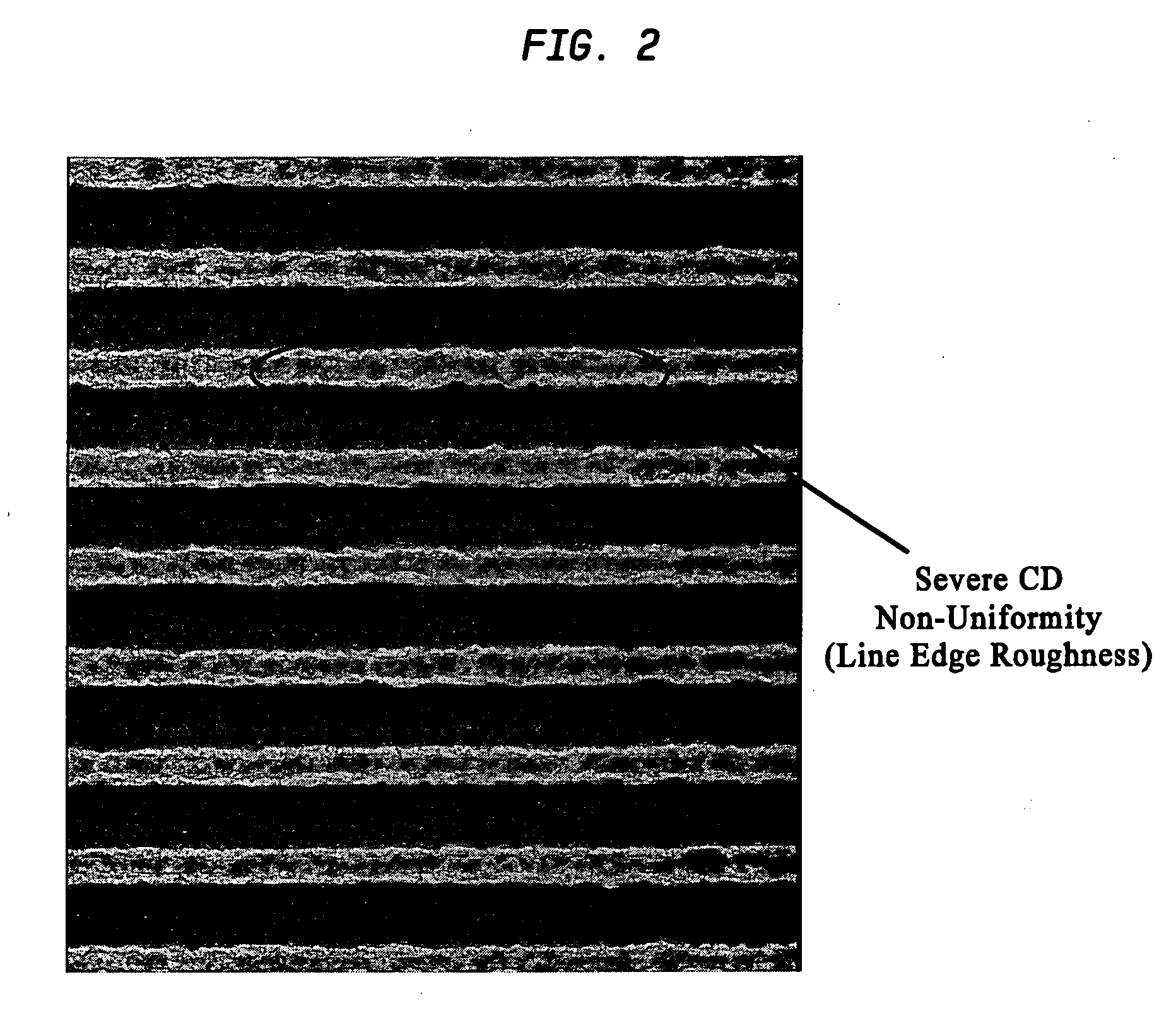System and method for plasma induced modification and improvement of critical dimension uniformity
a critical dimension and uniformity technology, applied in the field of integrated circuits, can solve the problems of increasing reducing the uniformity of post lithographic cd, and reducing the number of integrated circuits, so as to improve device performance, functionality and reliability, and reduce post lithographic cd non-uniformity ler.
- Summary
- Abstract
- Description
- Claims
- Application Information
AI Technical Summary
Benefits of technology
Problems solved by technology
Method used
Image
Examples
examples
[0028] Three etching conditions (normalized for etch rate differences) are highlighted in FIG. 5 that depicts a table showing percentage improvement in LER for various applied ARC etch chemistries that span the full process parameter space. Each of these three conditions were employed to etch the 200 nm thick ARC layer (shown in FIG. 4) to span the full process parameter space, namely: from “Negligible” (High Etch Rate, High Degree of Etch Anisotropy, and Low Degree of Etch Isotropy) to “Significant” Neutral to Ion Flux Ratio (Low Etch Rate, Low Degree of Etch Anisotropy, and High Degree of Etch Isotropy). The LER associated with each sample was subsequently measured post etch processing and the consequent change in LER (post Lithographic Processing LER—post Etch Processing LER) as a percentage was then determined.
[0029] The data obtained is summarized in Table I (FIG. 5) for each of the three employed etching conditions. It is relevant to note that the “Significant” neutral to ion...
PUM
 Login to View More
Login to View More Abstract
Description
Claims
Application Information
 Login to View More
Login to View More - R&D
- Intellectual Property
- Life Sciences
- Materials
- Tech Scout
- Unparalleled Data Quality
- Higher Quality Content
- 60% Fewer Hallucinations
Browse by: Latest US Patents, China's latest patents, Technical Efficacy Thesaurus, Application Domain, Technology Topic, Popular Technical Reports.
© 2025 PatSnap. All rights reserved.Legal|Privacy policy|Modern Slavery Act Transparency Statement|Sitemap|About US| Contact US: help@patsnap.com



